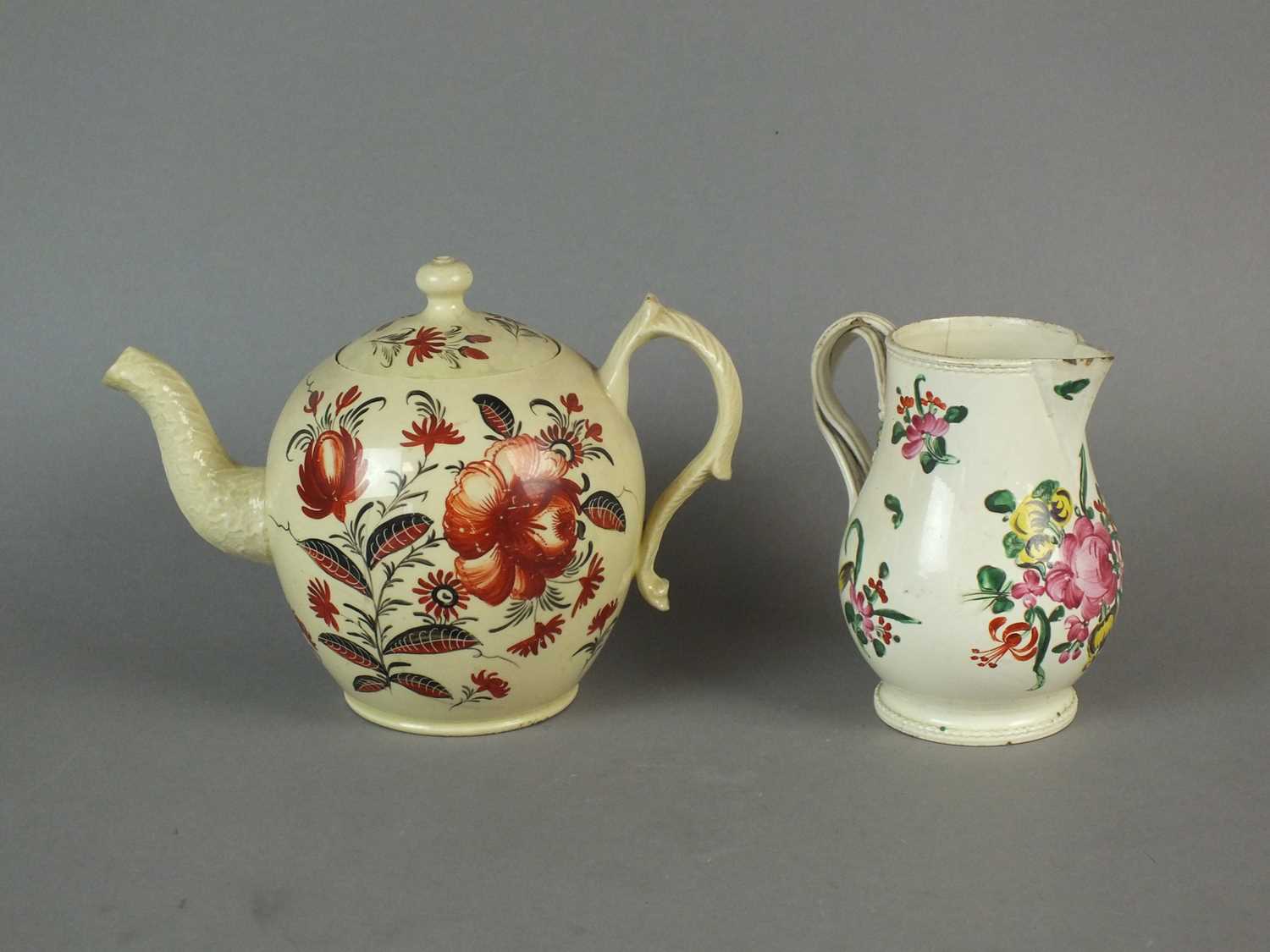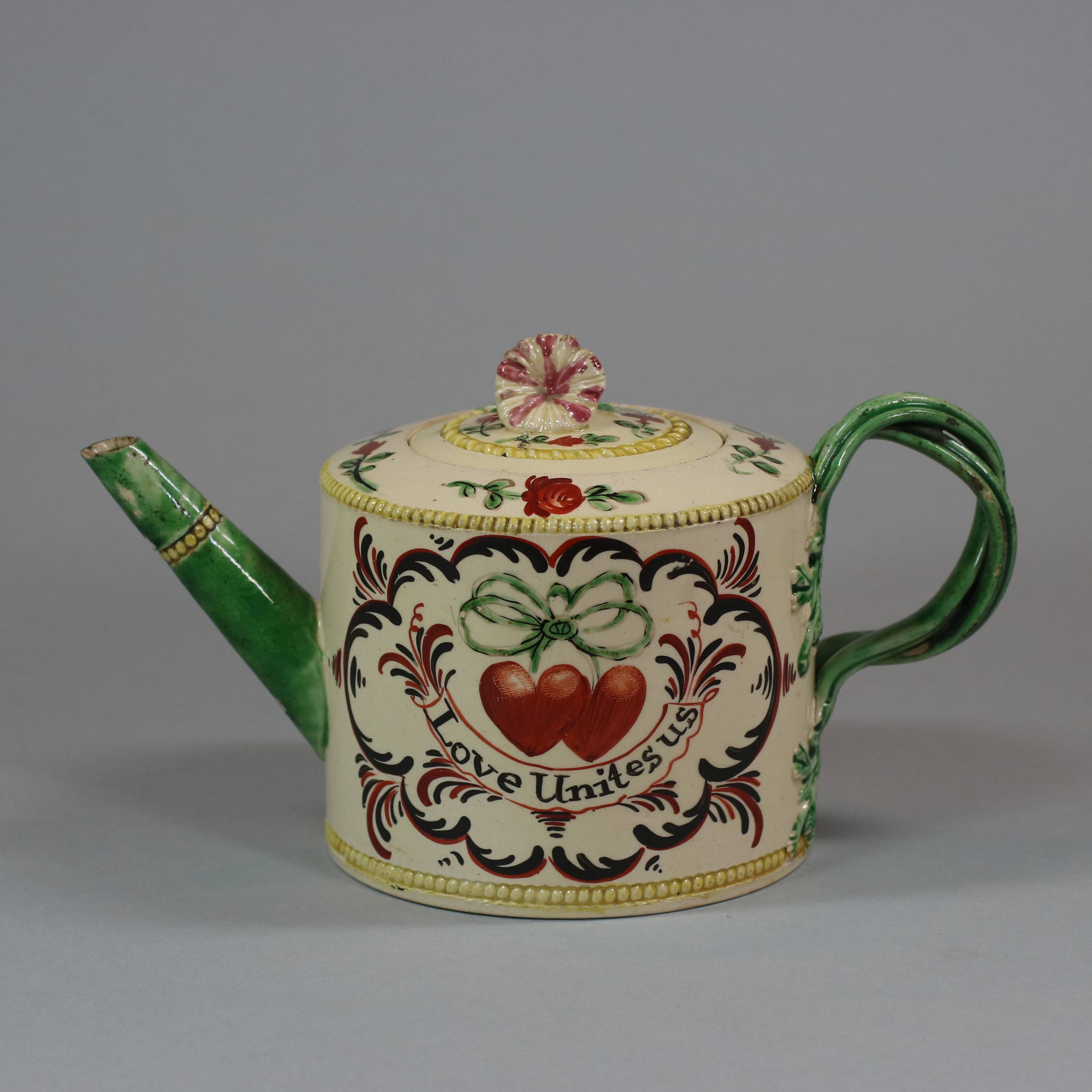

It wasn’t long before the pineapple became synonymous with hospitality. England, circa 1810 12836 An early Staffordshire creamware figure of a man holding a goose with splash green and ground glaze decoration. England, circa 1820-30 13363 An early 19th century pearlware figure of a fish seller painted in Pratt colors. Hostesses would use the pineapple as decoration when giving dinner parties as a sign that no expense was too great for the invited guests. A Staffordshire pearlware square base figure of a man in breeches and a black hat. The pineapple was a popular fruit, but it was hard to keep it from spoiling on its long trek from the Caribbean to Europe and thus commanded a high price. Foreign trade in the 16th century brought new imports such as coconuts, pomegranates and pineapples to England. The pineapple was an exotic fruit that did not grow in Europe. Why have a teapot shaped like a pineapple or a cauliflower? What do this fruit and vegetable symbolize or reference? What would the guests have read into the teapots’ shape?īoth the pineapple and cauliflower capitalize on the public’s interest in plants, while referencing England’s rise as a center of trade and commerce. Abolitionists might serve tea out of a teapot referring to the slaves’ humanity.Įnglish (Staffordshire), Teapot, ca. A hostess gathering a group to rally around a politician might serve tea out of a teapot with the politician’s image or name. The teapot was a very important part of this occasion as it set the tone for the gathering. An invitation to dinner might warrant serious consideration for both the host and the guest because of the obligations entailed, but tea presented the opportunity to fraternize in a more relaxed environment that might include card playing and dancing.

In the 18th century, class and social occasions were very structured.

It thus accounts for creamware’s popularity.Īlthough the famous 4 o’clock English teatime tradition dates to the 19th century, tea drinking in England in the 18th century was still performed. At a time when the whiteness of porcelain was extremely valued by the public, finding a way to make the cheaper earthenware clay white was a big accomplishment. One teapot is in the shape of a pineapple, the other is in the shape of a cauliflower.īoth teapots are made from creamware, a white-ish variety of earthenware clay made famous by Josiah Wedgewood in the 18th century. Both teapots are found in the Loca Miraculi “Cabinet of Curiosities” installation in the Museum’s lower level. The Museum has on view a variety of teapots, including two that I find very curious. It’s probably globular in form and might have some decoration applied to it. Photo by Gavin Ashworth.Ĭhances are that you own a teapot.


 0 kommentar(er)
0 kommentar(er)
